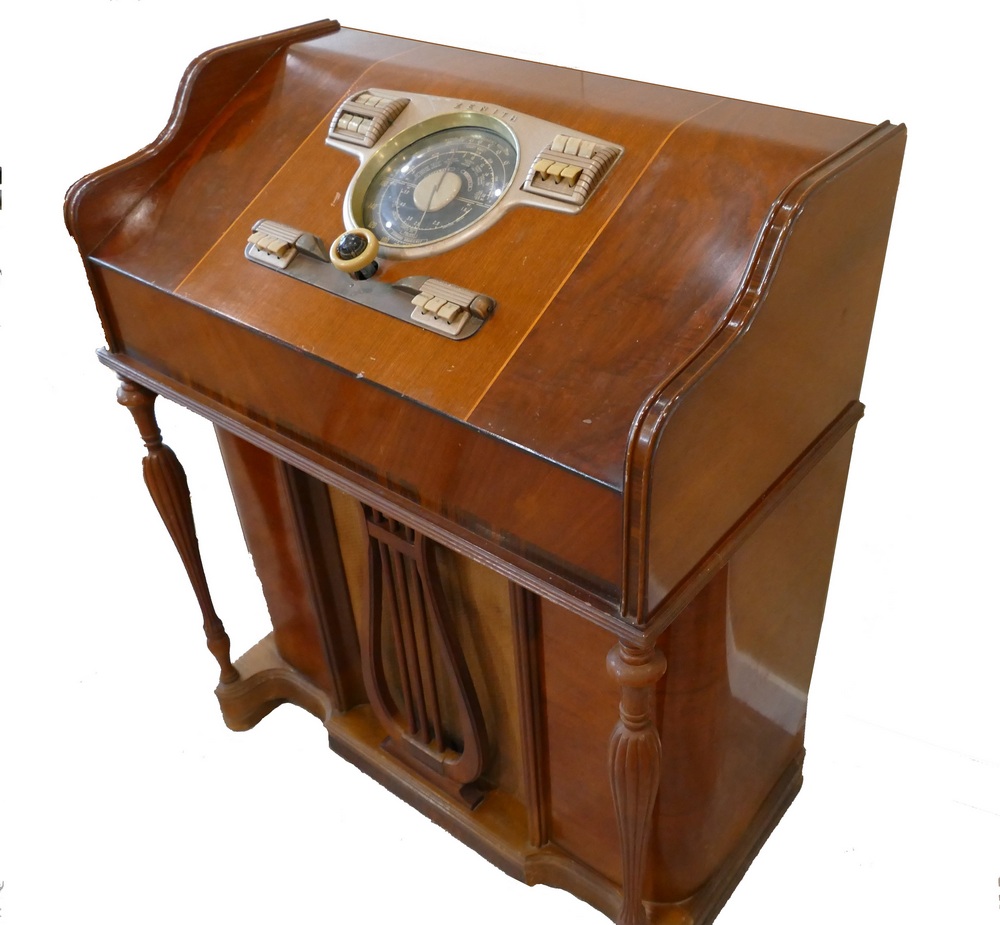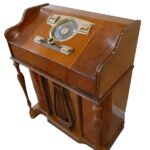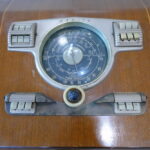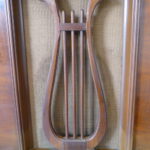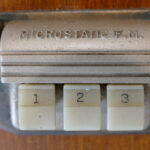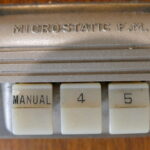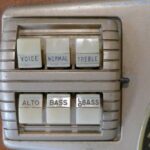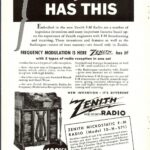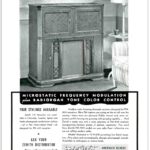Zenith released this striking radio in 1941 on the eve of World War II. It features a unique cabinet design that resembles a spinet piano with a decorative lyre molding in front of the speaker. It also has a sloping front panel that makes it easy for the user to tune the radio without bending over. It even had many convenient piano keys that not only added an art deco design but also were more structurally sound than ones made in the past. The radio received broadcast AM, FM, and two shortwave bands.
At the time this radio was made manufacturers were beginning to include FM reception as part of their high-end offerings. The FM band covers the original frequency range of 42-50 MHz. Manufactures that had a large investment in AM radio manufacturing lobbied the government to restrict FM broadcasting to an alternate frequency range, 88-108 MHz. They, chiefly David Sarnoff at RCA, argued that the higher wavelength band had more room and would be less likely to interfere with the soon to arrive television band. Zenith waited to the very end to come out with its FM line and used their recommended band, 44-55 MC, because signals were able to travel greater distances on it. The lower FM band lost out and by the end of the war Zenith had to use the 88-108 MHz band by government decree.
This radio includes 10 loctal (or loktal) vacuum tubes that were designed to lock firmly in place and were often utilized in automotive radios where motion tended to dislodge other kinds of tubes. It was advertised as having “microstatic FM reception” which alludes to the natural quality of FM as being very quiet and static-free as compared to AM reception. It also featured “Radiorgan tone color control” which meant that the user could achieve higher fidelity sound by adjusting a series of tone controls.
Our radio appears to be in very good condition with excellent finish. It is missing the outer wheel on the band change knob. We will replace this with a spare or purchase a reproduction. Hopefully this radio will be playing soon. Only a few years ago this relatively rare radio brought prices in the $600-$950 range. Recently (2021) they have become less sought after by collectors and as a result they are valued at around $200-$300. This trend is an excellent example of the fickle nature of the collector radios market.
Click on one of the images below to see a larger version.
References and Resources:
Circuit drawings from Rider’s Vol. 12, as found on NostalgiaAir.org.
Simplified pre-war to post- war FM Frequency converter, construction instructions.
Zenith, The Glory Years, 1936-1945, History and Products, by Harold Cones, John Bryant, & Martin Blankinship, Shiffer Publishing, 2003
Radio Museum .org reference page
Philco Phorum, discussion about restoration and crazy prices in 2017. Beitman Schematic on Philco site.
